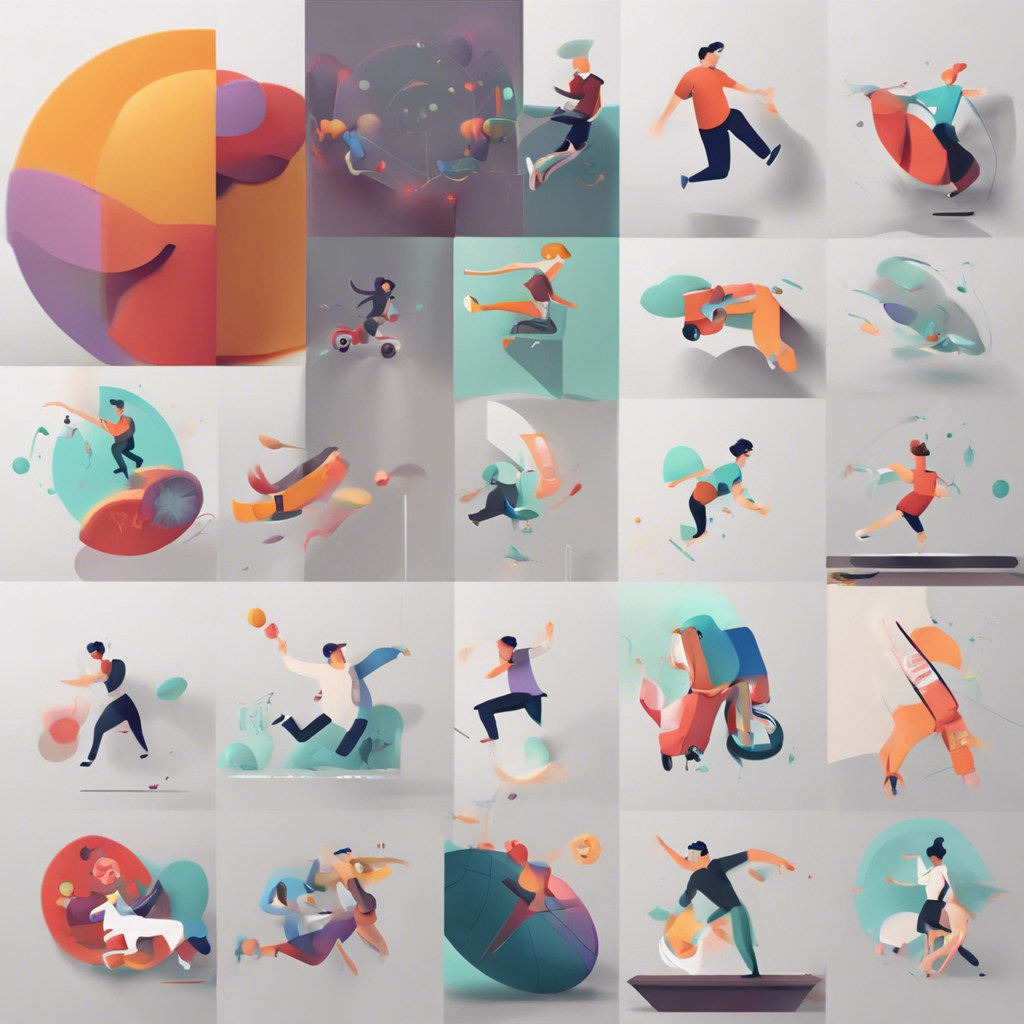What are the 12 types of motion design in animation?
The 12 Principles of Animation Explained
When we think of animation, our minds often drift to classic Disney movies. These timeless creations have left an indelible mark on our childhoods, captivating audiences of all ages. But how do animators bring these magical worlds to life? Enter the 12 principles of animation, a set of fundamental guidelines that serve as a benchmark for creating engaging animations. These principles were introduced in the 1981 book “The Illusion of Life: Disney Animation” by animators Ollie Johnston and Frank Thomas. Despite the evolution of animation techniques, these principles remain relevant today.
1. Squash and Stretch
The Squash and Stretch technique conveys an object’s weight, flexibility, and hardness. For instance, when an object falls, it flattens upon impact with the ground and then stretches out to maintain its volume. Characters’ faces and bodies are also stretched and compressed to express emotions. This technique adds depth and realism to animations, although exaggeration can make it comical. In The Lion King, observe how Simba’s expressions use Squash and Stretch when he tries a bug for the first time[^1^].
2. Anticipation
Anticipation prepares the audience for upcoming actions. It involves a small movement or action preceding a larger one. For example, before a character jumps, they often squat momentarily. This anticipatory motion signals to the audience that a jump is imminent. In Tarzan, watch how Tarzan squats and jumps around high branches and vines, creating an anticipation effect[^1^].
3. Staging
Staging refers to arranging characters, props, backgrounds, and camera perspectives to convey the intended message. Effective staging ensures clarity and guides the viewer’s attention. It’s about presenting the scene in a visually compelling way. Think of it as setting the stage for the animation[^1^].
4. Straight Ahead Action and Pose to Pose
These two approaches represent different animation methods:
- Straight Ahead Action: Animators create each frame sequentially, drawing the animation frame by frame. This method results in a more spontaneous and fluid motion.
- Pose to Pose: Animators plan key poses first and then fill in the in-between frames. This approach allows for better control over timing and specific poses. Both methods have their merits and are used based on the desired effect[^1^].
5. Follow Through and Overlapping Action
Follow Through occurs when parts of an object continue moving after the main action stops. For instance, a character’s hair may continue swaying after they come to a halt. Overlapping Action involves different parts of a character moving at different rates. These principles add realism and prevent stiffness in animations[^1^].
6. Slow In and Slow Out
Objects rarely start or stop abruptly in real life. The Slow In and Slow Out principles account for this by gradually accelerating or decelerating motion. For instance, when a character runs, they gradually speed up at the start and slow down before stopping. These principles create smoother transitions between actions[^1^].
7. Arc
Most natural movements follow an arched trajectory. The Arc principle emphasizes animating objects along curved paths rather than straight lines. Whether it’s a swinging pendulum or a character’s arm movement, arcs add fluidity and realism to animations[^1^].
8. Secondary Action
Secondary Actions complement the main action and enhance storytelling. They provide context or emphasize emotions. For example, while a character walks (the main action), their hair blowing in the wind (a secondary action) adds depth to the scene[^1^].
9. Timing
Timing determines the speed and rhythm of an animation. It affects the overall feel—whether an action is fast-paced, slow, or deliberate. Proper timing ensures coherence and impact in the animation[^2^].
10. Exaggeration
Exaggeration is a stylistic choice that amplifies actions or emotions. It adds interest and makes animations more engaging. However, balance is crucial; excessive exaggeration can lead to absurdity[^1^].
11. Solid Drawing
Solid Drawing emphasizes understanding three-dimensional forms. Animators should grasp how objects move in space, even in 2D animations. Strong foundational drawing skills are essential for achieving convincing motion[^1^].
12. Appeal
Appeal refers to making characters and scenes visually appealing. It involves designing characters with unique features, expressions, and personalities. An appealing character draws the audience into the story[^1^].
Remember, these principles apply not only to traditional hand-drawn animation but also to modern digital techniques. By mastering these fundamentals, animators create captivating worlds that continue to enchant audiences across generations[^3^]. Happy animating! 🎥✨
Discover more from EMD
Subscribe to get the latest posts to your email.
